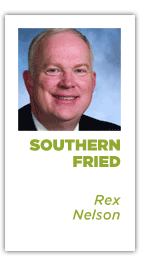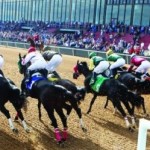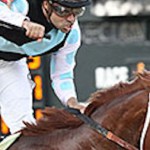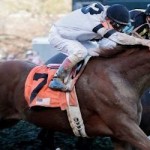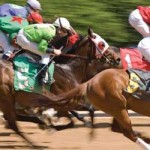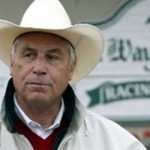The weather could not have been much worse for the latter part of March. It was raining, it was cold, it was foggy, the wind was howling and the track was a sloppy mess at Oaklawn Park last Saturday. Yet it still was a better crowd than the majority of thoroughbred tracks in this country ever experience on an ordinary Saturday afternoon.
In a feature story on Oaklawn, which was published in The New York Times in 2009, the newspaper’s superb racing writer, Joe Drape, attempted to explain the old track’s success.
“The Cellas have owned this charming racetrack for nearly 100 years, and their focus on quality horse racing has earned it the reputation as the Saratoga of the South,” he wrote. “Horse racing still rules here and is the reason that the owners and trainers of Smarty Jones, Afleet Alex and Curlin chose to prepare their colts here for the Kentucky Derby and beyond. In 2004, Smarty Jones used the Arkansas Derby as a springboard to a near miss of the Triple Crown when Birdstone caught him in the stretch of the Belmont Stakes.”
Drape, the author of several books and a past speaker at the Arkansas Literary Festival in Little Rock, makes no secret of the fact that he loves Oaklawn Park. So do some of the biggest names in racing such as trainer D. Wayne Lukas, who makes Oaklawn his base at age 77.
“It’s a great, great racing town, and if you don’t believe me, just walk into a diner or restaurant and see how many people are looking at the Daily Racing Form,” Lukas told Drape. “I have folks stop me all the time and ask me about the great horses I’ve had and tell me about the good ones that are at the track right now. There are not many places left where people adore the sport.”
Trainer Larry Jones told Drape: “They keep the surface in very good shape, and it is about as close to mimicking Churchill Downs’ oval as you’ll find. You can’t beat the air here, either. It’s fresh and clear and makes you feel like you’re in the country. Mostly, though, it’s because they have good purses, which bring in good horses.”
Here’s the recipe: A resort town where the fans adore racing; a track owned by a family that also adores racing; good purses; leading horses and jockeys.
I think I’m safe in saying this: Oaklawn Park, after some tremendous struggles in the 1990s, has entered another golden age.
What is it about Oaklawn?
Ask Terry Wallace. He has retired as the track announcer, but he’s still the best public relations man there is for Oaklawn. It’s always a pleasure to see him.
“It’s hard to narrow down my most memorable day at the track,” Wallace once told me. “It usually comes down to meeting the people who I have admired for a long time. I’ve met Carol Channing, Stan Musial, D. Wayne Lukas, Laz Barrera, Pat Day and hundreds of others who have made my life all the richer and more exciting.
“I’m not a Hot Springs native. I was born in Cleveland and came here in 1975 when I was hired to be the announcer. I got lost when I was coming here from New Orleans, where I was working at the time. Once I got to Hot Spring County, I thought I was at my destination. What a shock to find out that Hot Springs wasn’t in Hot Spring County. It took me an entire afternoon of driving around Hot Spring County to find out that little secret.”
In this era of corporate ownership of thoroughbred tracks, Oaklawn goes against the grain with a family in charge that’s dedicated to racing and has been for more than 100 years.
Wallace explained it this way: “We’re not publicly held so we can be a little different.”
Charles Cella has never been afraid to be different. Remember in February 2010 when Cella announced that he would increase the purse of the Apple Blossom that year from $500,000 to $5 million if both Rachel Alexandra and Zenyatta would show up? Had it happened, it would have been the largest purse for a filly and mare race in the history of North American thoroughbred racing. National media attention would have been focused on Arkansas for days leading up to the race.
Cella invented the Racing Festival of the South in 1974. The festival traditionally has included one or more stakes races each day of the final week of racing, ending with the Arkansas Derby.
Remember in 2004 when Cella stated that any horse that could sweep the Rebel Stakes at Oaklawn, the Arkansas Derby and the Kentucky Derby would win a bonus of $5 million in celebration of Oaklawn’s centennial year?
Along came Smarty Jones.
“In 1904, my grandfather had given $50,000 to the winner of a handicap in honor of the St. Louis World’s Fair,” Cella once told me. “I multiplied $50,000 by 100 and came up with $5 million. I didn’t realize at the time that the whole thing would play out like a Hollywood script. As it turned out, that money was the best investment I ever made. You could not have drawn it up any better. Due to all the publicity Smarty Jones received, other trainers began giving Oaklawn a closer look.”
Chad Garrison later wrote in the St. Louis Business Journal: “Charles Cella may be the only person in the world who could make a $5 million bet, lose the bet and feel good about it.”
After Smarty Jones won the Rebel Stakes and the Arkansas Derby, Cella began negotiating with Lavin Insurance of Goshen, Ky. Cella had insured the first $2.5 million with Lavin. It was just two days prior to the Kentucky Derby when Lavin insured the remaining $2.5 million. The $5.8 million Smarty Jones won at the Kentucky Derby was the most ever paid to a horse for one race. At Oaklawn, more than 7,000 people showed up that first Saturday in May just to watch the simulcast.
Insurance underwriters likely insured the first $2.5 million in 2004 based on the fact that only one horse (Sunny’s Halo in 1983) had won all three races since the Rebel began in 1961. With the chances of winning less than one in 40, a premium of less than 10 percent of the bonus probably was required. Smarty Jones went into the Kentucky Derby with 4-to-1 odds, meaning that the premium on the second $2.5 million likely was 25 percent or more.
Smarty Jones went on to win the Preakness, becoming the most famous 3-year-old in years and capturing the heats of Americans who had never before followed racing. A year later, Arkansas Derby winner Afleet Alex won the Preakness and the Belmont Stakes. Suddenly, the racing world was noticing that the previous two Arkansas Derby winners had captured four of six Triple Crown events.
The run of success continued in 2007 after Curlin won the Arkansas Derby. After finishing third in the Kentucky Derby, Curlin won the Preakness and finished second in the Belmont. He would go on to win the Jockey Club Gold Cup at Belmont Park and the Breeders’ Cup Classic at Monmouth Park en route to being named the Eclipse Award Horse of the Year.
Here’s how Charles Cella put it: “We have always pursued a goal of bringing the world’s best racing to Arkansas. That is what led us to create the Racing Festival of the South more than 30 years ago. We have been even more fortunate in recent years.”
He uses the word “fortunate.” I happen to believe you make your luck. Cella, his sons, general manager Eric Jackson and others at Oaklawn are making big things happen at Hot Springs on a regular basis.
Cella, who was once a nationally ranked squash player, told me several years ago: “In all sports, the satisfaction comes from knowing how hard you have worked and how well you have prepared. If you lose but you’re fully spent at the end, that’s OK. When you win, that’s lagniappe.”
In this spring of 2013, Oaklawn is a shining star in a sport that’s otherwise struggling. Arkansans should be proud of that fact. Should we ever lose racing and the colorful people involved in the sport, we’ll lose an important part of the American culture.
I’m drawn to Ted McClelland’s description of Hawthorne Race Course near Chicago. In his delightful book “Horseplayers: Life at the Track,” McClelland has a description of a place that could pass for other American tracks: “In the grandstand, the grill sold fried chicken, collard greens and peach cobbler. The cigarette smoke was not as heavy as it had been years ago, when it clouded as thickly as mustard gas on the Western Front and soaked into clothing, skin and the newsprint of my Racing Form. But there were still afternoons when sheer gray scarves floated beneath the ceiling.
“Over by the barbershop, old men threw spades and bid whist across a scarred tabletop. In the carrels facing the television monitors, which showed races from all across the country, you’d find baskets full of chicken bones and discarded tickets from Aqueduct, Calder, Laurel, Turfway and the Fair Grounds. The pleas of the gamblers, some sacred, some profane, were as loud as the barking of brokers at the Mercantile Exchange.”
The track. What a place.


